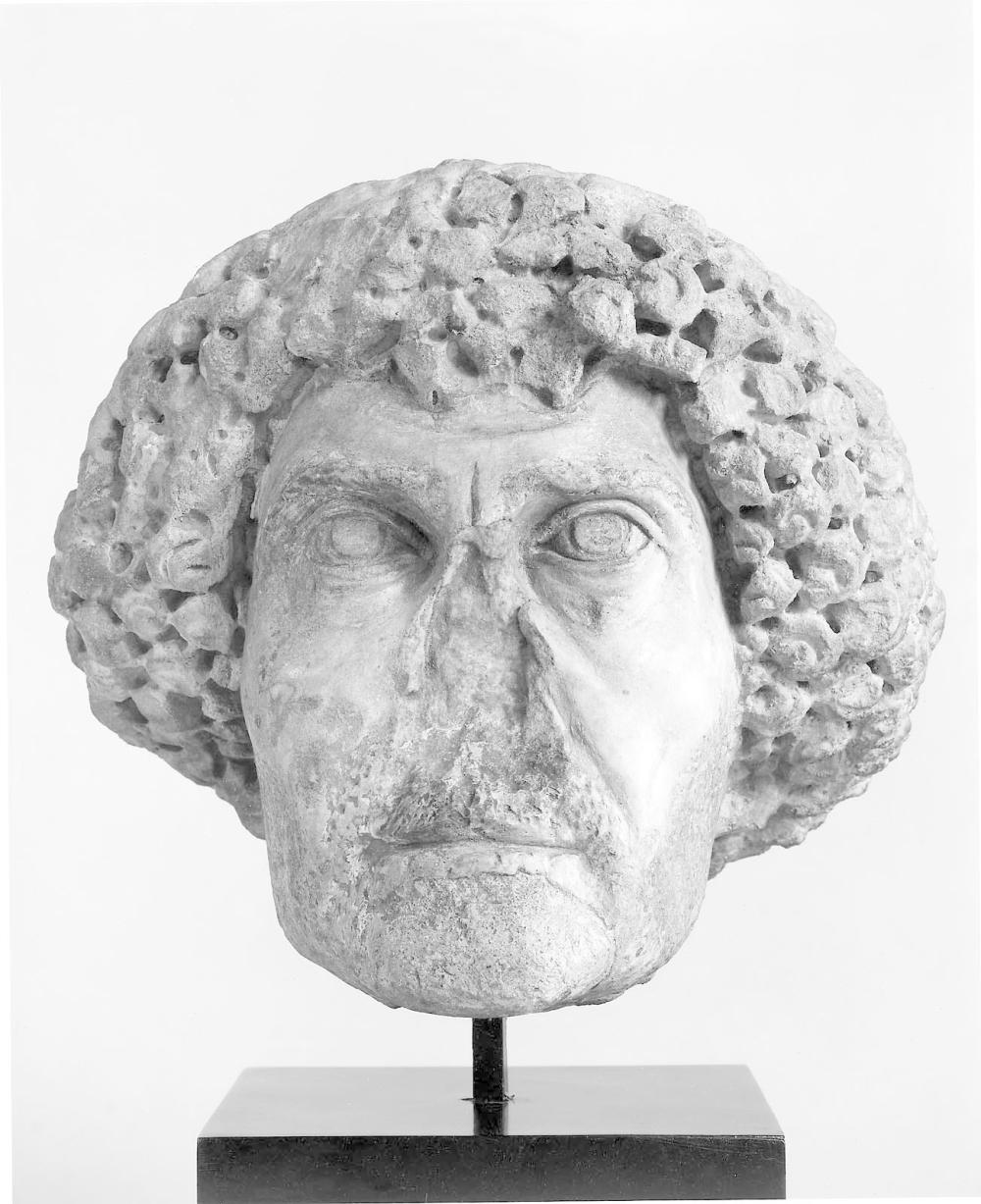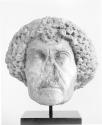Advanced Search
Portrait of a benefactor
Early Byzantine
Early Byzantine Period
First half of the 6th century CE
Medium/Technique
Marble, from Göktepe near Aphrodisias
Scientific Analysis:
University of South Florida Lab No. 8472: Isotope ratios - delta13C +2.9 / delta18O -2.7,
Attribution - Göktepe 3-4, Turkey (near Aphrodisias). Justification - C and O isotopes, fine grain, from Aphrodisias
Scientific Analysis:
University of South Florida Lab No. 8472: Isotope ratios - delta13C +2.9 / delta18O -2.7,
Attribution - Göktepe 3-4, Turkey (near Aphrodisias). Justification - C and O isotopes, fine grain, from Aphrodisias
Dimensions
Height: 21 cm (8 1/4 in.)
Credit Line
Gift of Jerome M. Eisenberg and Richard Titelman
Accession Number1971.18
NOT ON VIEW
CollectionsEurope, Ancient Greece and Rome
ClassificationsSculpture
Catalogue Raisonné
Sculpture in Stone (MFA), no. 382; Sculpture in Stone and Bronze (MFA), p. 116 (additional published references).
DescriptionThis head of a local benefactor (maybe Rhodopais) once fit into a fully draped statue (with a dowel) . It was found in the Hadrianic Baths in Aphrodisias Turkey. Aphrodisias was a major center of portrait sculpture through the fifth century A.D. The use of line to emphasize the modeling and texture of this man's aging flesh is characteristic of the late sculptural school of Aphrodisias - as is the use of deep drillwork to create rich contrasts of light and shadow. He has curly hair framing his long face; he has a stippled beard, disk shaped eyes --all point to a 6th century date.
Condition: The chin and area around the eyes are partly restored or slightly filled in; the piece has been blackened due to a fire, probably in recent times.
Condition: The chin and area around the eyes are partly restored or slightly filled in; the piece has been blackened due to a fire, probably in recent times.
Provenance1904, excavated at the Baths of Hadrian, Aphrodisias, Caria, Turkey, by Paul Augustin Gaudin (b. 1858 – d. 1921) and subsequently shipped to Europe [see note 1]. 1970, Jerome M. Eisenberg (dealer), New York [see note 2]; 1971, gift of Jerome M. Eisenberg and Richard Titelman to the MFA. (Accession Date: January 13, 1971)
NOTES:
[1] Kenan T. Erim, “De Aphrodisiade,” American Journal of Archaeology 71, no. 3 (July, 1967), pp. 237-238, fig. 15. [2] Lent to the MFA May 8, 1970 and said to have been acquired in Paris.
NOTES:
[1] Kenan T. Erim, “De Aphrodisiade,” American Journal of Archaeology 71, no. 3 (July, 1967), pp. 237-238, fig. 15. [2] Lent to the MFA May 8, 1970 and said to have been acquired in Paris.



